
HOME | TALKS | PROJECTS | CURIOSITIES & FEATURES | BUILDING DATING & ANALYSIS | NEWSLETTER | CONTACT |
| Building Dating & Analysis |
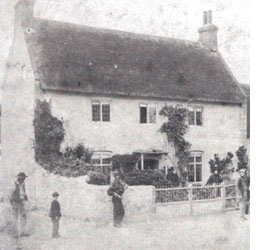
Myrtle Cottage as it appeared in the mid 19th Century with its thatched roof 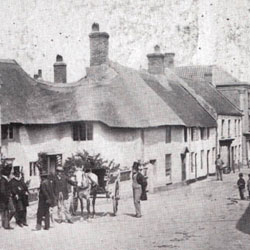
Thatched cottages attached to Myrtle Cottage now Council Offices and Kebab Shop 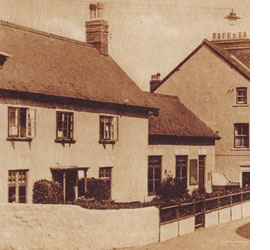
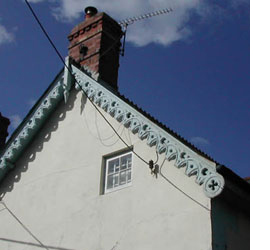
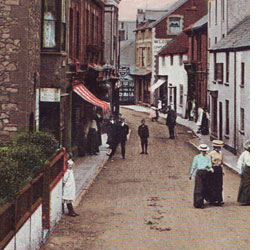
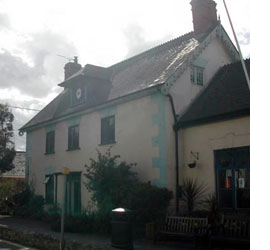
Court House today |
The Court House (Myrtle Cottage), Swain Street A distinctive house with a nineteenth century portico adjacent to the Town Council Chamber, Myrtle Cottage as it was called was formerly the home and studio of Watchet's pioneering photographer James Date. Watchet was indeed fortunate in having James Date's photographic skills as he recorded many of the exciting changes and developments of the 1860's and 1870's in the town and harbour. It was a boom time, the railway had arrived from the mainline at Taunton in 1862. The already established West Somerset Mineral Railway was bringing iron ore from the Brendon mines for shipment to the iron works at Ebbw Vale. The harbour was enjoying a period of unprecedented trade. At this period a good number of houses in Watchet would have been thatched. Watchet was well placed for the import of more modern building materials. Roofing tiles from Wales and bricks from Bridgwater were easily transported by sea to the town. Interestingly only two thatched cottages remain in Watchet and we can assume that from the 1860's many buildings underwent considerable 'modernisation' which would account for much of the loss of thatch. On the earlier photographs and into the twentieth century is evidence of the curved wall with its iron and wooden railings that survived until comparatively recently. It is also interesting to note that behind the railings is a garden and of particular interest the Myrtle bushes. 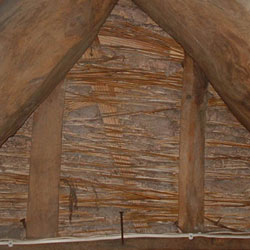 Towards the end of the Nineteenth Century Myrtle Cottage underwent considerable change, the thatched roof was replaced by slates (this would have happened to a number of houses in the old town). Interesting to note are the decorative barge boards, the house was showing off a bit.
Towards the end of the Nineteenth Century Myrtle Cottage underwent considerable change, the thatched roof was replaced by slates (this would have happened to a number of houses in the old town). Interesting to note are the decorative barge boards, the house was showing off a bit.
By the first half of the twentieth century the wall is all but gone as are the railings, Myrtle bushes and gate. Where the garden once was is a recently paved area. As with a number of properties in Swain Street from the exterior it is not always easy to suggest a date. The proportions of Myrtle Cottage, position and size of windows and door etc however indicate the potential for an early building. As with many old buildings it has undergone many changes through its life but the interior reveals some exciting discoveries. In what is now the kitchen there is an impressive fireplace with an elm bresemer. 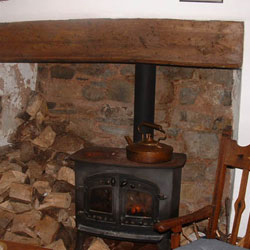 There was obviously an abundance of Elm timber throughout West Somerset. It was in fact shipped from Watchet as a cargo to Bristol. It occurs in numerous building as the principal timber in house building. It was used extensively for floorboards and occurs frequently in cottage and farmhouse furniture from at least 1700 in this area.
There was obviously an abundance of Elm timber throughout West Somerset. It was in fact shipped from Watchet as a cargo to Bristol. It occurs in numerous building as the principal timber in house building. It was used extensively for floorboards and occurs frequently in cottage and farmhouse furniture from at least 1700 in this area.
There is also conclusive evidence that there was once a spiral staircase. The layout suggest evidence of a cross-passage with a hall on the side nearest Anchor Street. The fireplace and the above suggest a date of pre 1700. When entering the roof space there can be little doubt. There is a wonderful example of early roof construction illustrated are the elm timbers secured by a single stout peg. These timbers now support the tiled roof and have done for over 300 years. Another exciting discovery is a surviving example of wattle and daub. Court House is an important building in the context of Watchet's building history and even this cursory examination suggest that it has much more to reveal. The society is grateful to the owners of Court House for their assistance in this project. |
| © Copyright Watchet Conservation Society . All rights reserved. info@watchetconservationsociety.co.uk | Site by Best Before End |